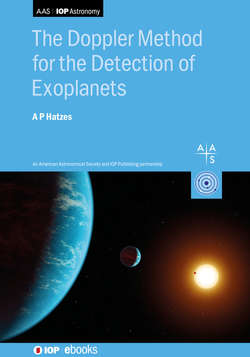Читать книгу The Doppler Method for the Detection of Exoplanets - Professor Artie Hatzes - Страница 39
На сайте Литреса книга снята с продажи.
References
ОглавлениеBaranne, A. 1972, Auxiliary Instrumentation for Large Telescopes ed S. Laustsen & A. Reiz (Geneva: ESO/CERN) 227–39
Dekker, H., D’Odorico, S., Kaufer, A., Delabre, B. & Kotzlowski, H. 2000, Proc. SPIE, 4008 534–45
Deming, D. & Plymate, C. 1994, ApJ, 426, 382
Eversberg, T. & Vollman, K. 2015, Spectroscopic Instrumentation (Berlin: Springer)
Kaufer, A. & Pasquini, L. 1998, Proc. SPIE, 3355, 844
Schroeder, D. J. 1987, Astronomical Optics (New York: Academic)
Strassmeier, K. G., Ilyin, I., Järvinen, A., et al. 2015, AN, 336, 324
Tull, R. G., MacQueen, P. J., Sneden, C. & Lambert, D. L. 1995, PASP, 107, 251
Tyson, R. K. 1987, Principles of Adaptive Optics (New York: Academic)
Vogt, S. S. 1987, PASP, 99, 1214
Vogt, S. S., Allen, S. L., Bigelow, B. C., et al. 1994, Proc. SPIE, 2198, 362
Vogt, S. S., Radovan, M., Kibrick, R., et al. 2014, PASP, 126, 359
1The focal ratio is defined as the focal length of the telescope, f, divided by its diameter, D.
2The interference pattern is merely the Fourier transform of the aperture, and as we will see in Chapter 7, there is an inverse relationship between the spatial domain and the Fourier frequency domain.
3In the 1980s, my fellow graduate student G. Donald Penrod once made the poetic remark, “There is a glorious match between CCD detectors and echelle spectrographs.” So true!
